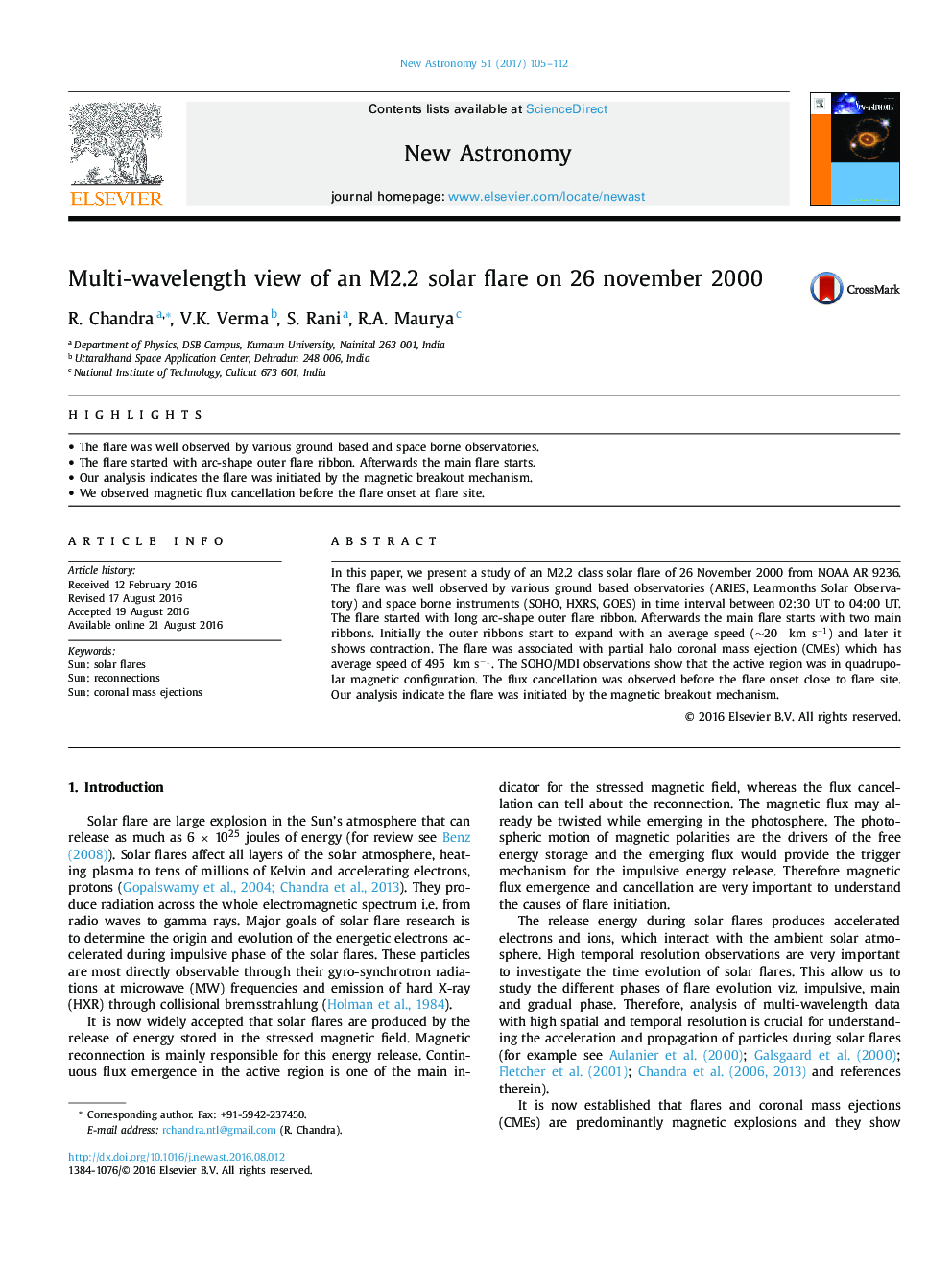| Article ID | Journal | Published Year | Pages | File Type |
|---|---|---|---|---|
| 1778681 | New Astronomy | 2017 | 8 Pages |
Abstract
In this paper, we present a study of an M2.2 class solar flare of 26 November 2000 from NOAA AR 9236. The flare was well observed by various ground based observatories (ARIES, Learmonths Solar Observatory) and space borne instruments (SOHO, HXRS, GOES) in time interval between 02:30 UT to 04:00 UT. The flare started with long arc-shape outer flare ribbon. Afterwards the main flare starts with two main ribbons. Initially the outer ribbons start to expand with an average speed (â¼20Â km sâ1) and later it shows contraction. The flare was associated with partial halo coronal mass ejection (CMEs) which has average speed of 495Â km sâ1. The SOHO/MDI observations show that the active region was in quadrupolar magnetic configuration. The flux cancellation was observed before the flare onset close to flare site. Our analysis indicate the flare was initiated by the magnetic breakout mechanism.
Keywords
Related Topics
Physical Sciences and Engineering
Physics and Astronomy
Astronomy and Astrophysics
Authors
R. Chandra, V.K. Verma, S. Rani, R.A. Maurya,
